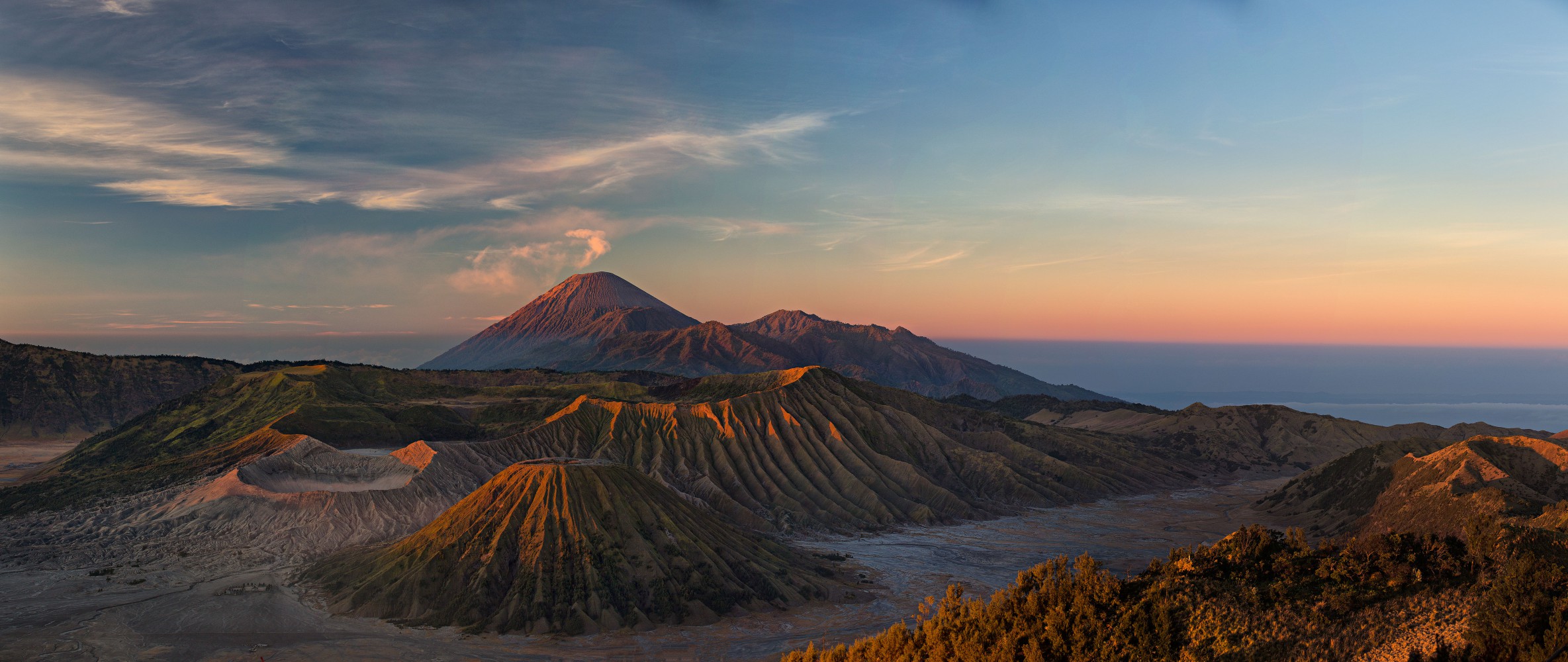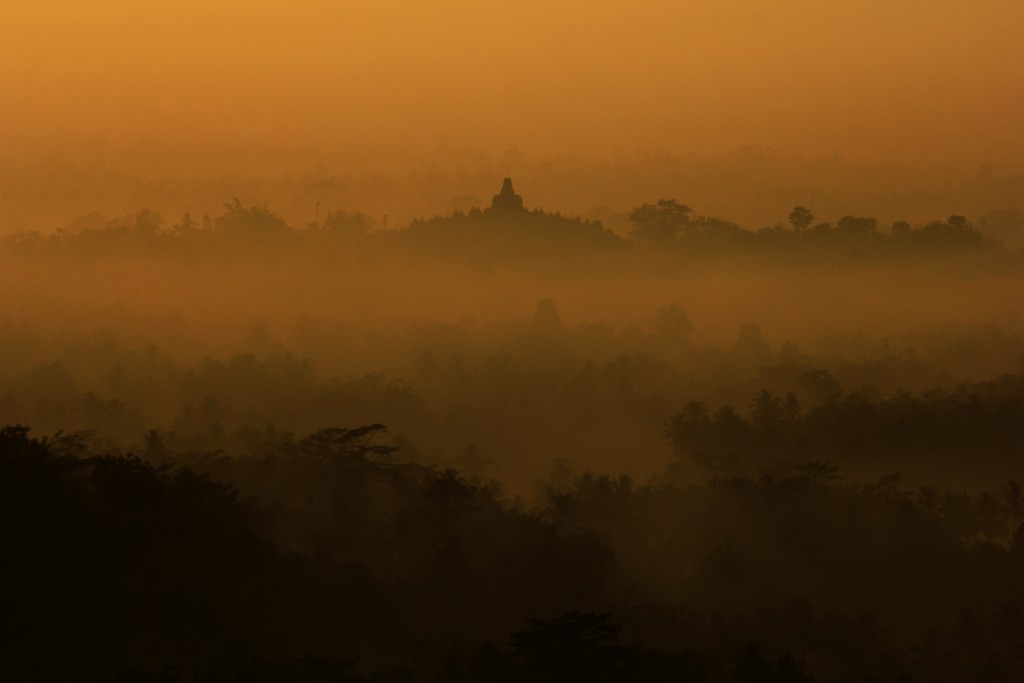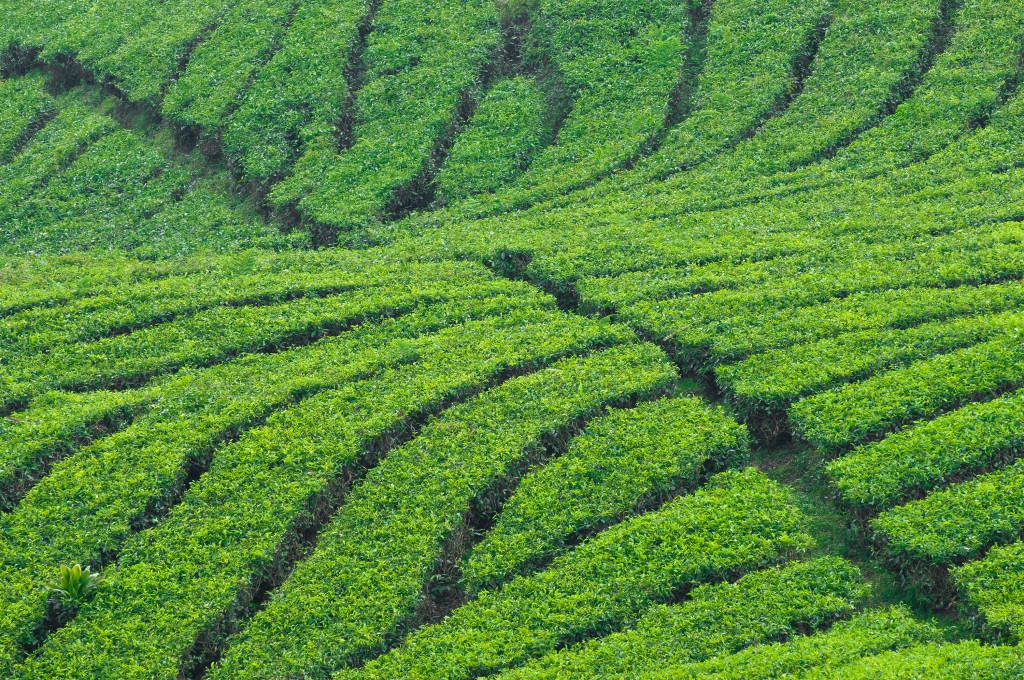Island of the Fire Gods
It’s one thing to drink organic single origin tea from some far-off land. But it’s another to drink the brew of freshly plucked leaves, only feet from the plantation in which they grew.

This is just one of the little perks of exploring the volcanic peaks of central Java on a truly unique motorbike adventure. We have stopped for a ‘cuppa’ on the long road up the steep flanks of Mt Lawu, one of three volcanic peaks included in our seven day, five night itinerary.
The climb was immensely refreshing after the traffic-laden highways that connect Java’s chaotic cities far below. The air up in the highlands is fresh and clear, the view across their fertile tea plantations mesmerising in a patchwork of greens and earthy browns, and the hills undulating like a rippling quilt. This tea shack is perched on the edge of paradise.
Our little group of five had met in the university town of Yogyakarta two days earlier, after arriving from both sides of the Pacific. For my friends Marco Cortesi, Ben Smith, Will Theirbach, and my father, Rob Walton, it had been a while since their last outing on a motorcycle, but the idea of exploring Java on two wheels was seductive enough to draw them across the oceans for an autumnal tour of Indonesia. There was excitement and trepidation in the air as we mounted up on our fleet of 200cc bikes and followed our ever-smiling, ever-smoking guide, Sugiat (together with another guide, Andy, in our support vehicle) out of Yogyakarta towards our first stop, the Dieng Plateau. After an hour, the heavy city traffic gave way to narrow, winding mountain roads as we climbed toward the heavens through rice terraces and valley villages abundant with fruit crops.
The Dieng Plateau is the floor of a volcanic crater that sits some 2000 metres above sea level. In fact, its name comes from Di Hyang, which means ‘abode of the gods’, which seemed fitting as the road steepened and we climbed ever higher towards the clouds. At a viewpoint near the top of the peak, we paused to gauge our progress, gazing down to terraced tobacco fields and a layering of tea plantations that tumbled down the mountainside into Sumbing Valley. Above, the summit was still lost in cloud cover.

It is easy to see why this volcanic plateau, with its wreathing cloud-covered peaks and bubbling sulphur-infused lakes, was once considered a religiously auspicious locale. Of the more than 400 Hindu temples that thrived here between the 7th and 8th centuries, only eight remain, although those have been beautifully preserved. After a lunch of fried chicken and freshly ground sambal at a tiny hole-in-the-wall restaurant, we explored the temple ruins, running our fingers across the ancient faces that still stared out from the stone reliefs.
It became clear when we visited nearby Kawah Sikidang — a boiling mud and water lake constantly enveloped in pluming clouds — that it was low season. The site around this eye into the fiery centre of the earth is moon-like in its desolation and the air is thick with sulphur. Daylight was in retreat, so we mounted up again, passing through thick forests before reaching the steep road down the mountainside, bound for the lowlands and the temple complex of Borobudur.
And then we lost our guide — or more correctly, our guide lost us. Sugiat, on his zippy little white motorbike, wasn’t exactly the most attentive guide in the world, and after our group was slowly split apart by trucks and buses on the narrow road down from the plateau, we turned off the highway onto quieter roads for a chance to regroup. Sugiat, despite our calls and horn tooting, charged off into the sunset, oblivious that he’d lost his charges.
What do five foreigners in a strange land, without direction, do in such a situation? We decided to navigate our own way to Borobudur, which Sugiat had hinted was close by — although his estimates of distance and time from place to place were known to fluctuate wildly, becoming a standing joke. With a little help from some sympathetic locals and a refreshed sense of adventure in the air, we set off in the direction of Borobudur and our hotel at its base. However, night comes quickly in the mountains of central Java and with it, disorientation. The roads are bumpy at the best of times and the traffic copious, and under the veil of night it became even harder to stay the course. As a result, we were forced to pull over, make some calls and finally direct Sugiat to us. It was a valuable early lesson that we needed to keep an eye on both one another and our guide.

It was early next morning, a little after 4am, when we rose to explore Borobudur by first light. We carried torches and cameras up the dark, tree-lined path from the little Borobudur Hotel at the UNESCO World Heritage site’s base, and climbed the steep steps towards the summit. The 9th century Mahayana Buddhist temple, Borobudur, was an important place of pilgrimage during the Sailendra Dynasty, before being mysteriously abandoned and buried with volcanic ash, only to be unearthed again in the early 1800s. The complex consists of six square platforms topped with three circular ones, and remains home to a total of 2672 relief panels and 504 Buddha statues. The story goes that those who read the reliefs in order, from the base to the top of the temple, will reach Nirvana. We, however, did things in reverse, starting at the top while the low sun cast a backdrop of dark indigo across the entire sky, then infused it with rose and finally ripe tangerine hues. More than 50 travellers joined us watching the dawn, and the arrival of the sun was truly mesmerising. Once the day had begun, we wound our way down the temple complex, fascinated by the ancient faces that peer out from the stone work, while overhead the sun sprinted higher into the sky and the temperature started to soar with it.
Back on our motorbikes, we headed back towards Yogyakarta, this time to visit the Kraton Ngayogyakarta Hadiningrat, the expansive palace of the Sultan of Yogyakarta, and then on to the ancient Prambanan Temple, where we dressed up in traditional sarongs to tour the 9th century Hindu stone temple complex dedicated to the trimurti (trinity) of Brahma, Vishnu and Shiva — in dazzling afternoon heat. The largest Hindu temple in Indonesia, this is another UNESCO-listed complex, best known for its towering 47 metre central building, which attracts travellers from across the globe.
After a night in a rather run-down hotel in the equally rather run-down city of Solo, we were on the road again, leaving the dusty highways of the city behind and climbing up through the local tea plantations in time for a fresh brew. Our young brew-master cannot stop staring and giggling – they don’t get that many tourists up here, let alone five dusty and sunburnt motorcyclists. Still, she makes the strong tea for us in stout glass cups, the brew steaming in the shade of a simple bamboo shack. Below we spy the conical hats of the tea pickers as they harvest leaves in a neighbouring plantation, and across the road the dark silhouette of Lawu rises out of the morning haze.
It’s a long steep climb up to the Ceto Temple, a 15th century Javanese Hindu shrine hidden away high on the flanks of Mt Lawu. With bikes straining in first gear, we climb the pot-holed road into the tiny village which wreaths this ancient temple, before ascending the stairs to its gates. The view down across Java is spectacular and well worth our ponderous journey up the mountainside.
We slowly make our way down the mountain again, stopping in at a local restaurant for chicken roasted with wild bumblebee honey gathered by local farmers before arriving at the impressive 81 metre high Tawangmangu Falls, where we pretend not to be intimidated by the wild monkeys that reign supreme at their base.
By dusk we’ve crossed the plains and made good time up modern, quiet highways into another mountain range, at the border between Central and East Java. At a trucker’s coffee shack we take a break and sip thick, black Javanese coffee, watching as clouds roll down the mountainside and a troop of crab-eating macaques call to each other across the valley, a weathered Chinese gateway the only sign we’re passing from one province to another. Within an hour we’re checked in at the beautifully-maintained, Thunderbirds-esque Sarangan Lake Hotel sipping chilled Bintang beer on a terrace overlooking the lake’s water, waited on by two old gents in impeccable traditional Javanese suits and peaked caps.
After a day’s ride across a plateau dusted with fresh volcanic ash from Mt Kelud’s latest tantrum, we reach Mt Bromo, climbing to the rim of the Tengger massif before crossing the Sea of Sand, a vast, protected sea of volcanic ash that curls around the base of the active volcano. My bike’s clutch gives in after days of hard riding, but fortunately a friendly local in an ancient bright red Land Cruiser offers a hand, and I meet up with the rest of the group on the other side, at one of the small hotels that cater to Bromo-bound travellers.
At 2329 metres high, Mt Bromo is not Java’s tallest active volcano, but it’s certainly its best known and most visited, and the tiny hotels perched on its crater rim fill up weeks in advance. It is pitch dark and remarkably cool at 3.30am the next morning when we ‘mount up’ once again, temporarily exchanging bikes for seats in a long convoy of boxy short-wheelbase Land Cruisers that wind their way through the darkness, around the crater’s edge and on to a viewing point on the higher Mt Penanjakan — just in time for sunrise. The sun kisses the volcano’s slope with golden light, casting its rocky ravines in shadow, a steady plume of smoke at its summit a warning that the peak remains active, having last erupted in 2012. Behind it another active peak, Mt Semeru, also broods quietly.
Sunrise, then the drive back across the Sea of Sand — past the weathered remains of a Hindu Temple and herds of stout ponies carrying tourists up to the crater’s edge — is a brilliant climax to our journey. We return to the hotel for breakfast and to pack, exhausted and elated in equal measure. For five sometime-riders, this has been a challenge that we faced head-on; a test of resilience, rewarded with sacred sites, superb landscapes and welcoming people.
